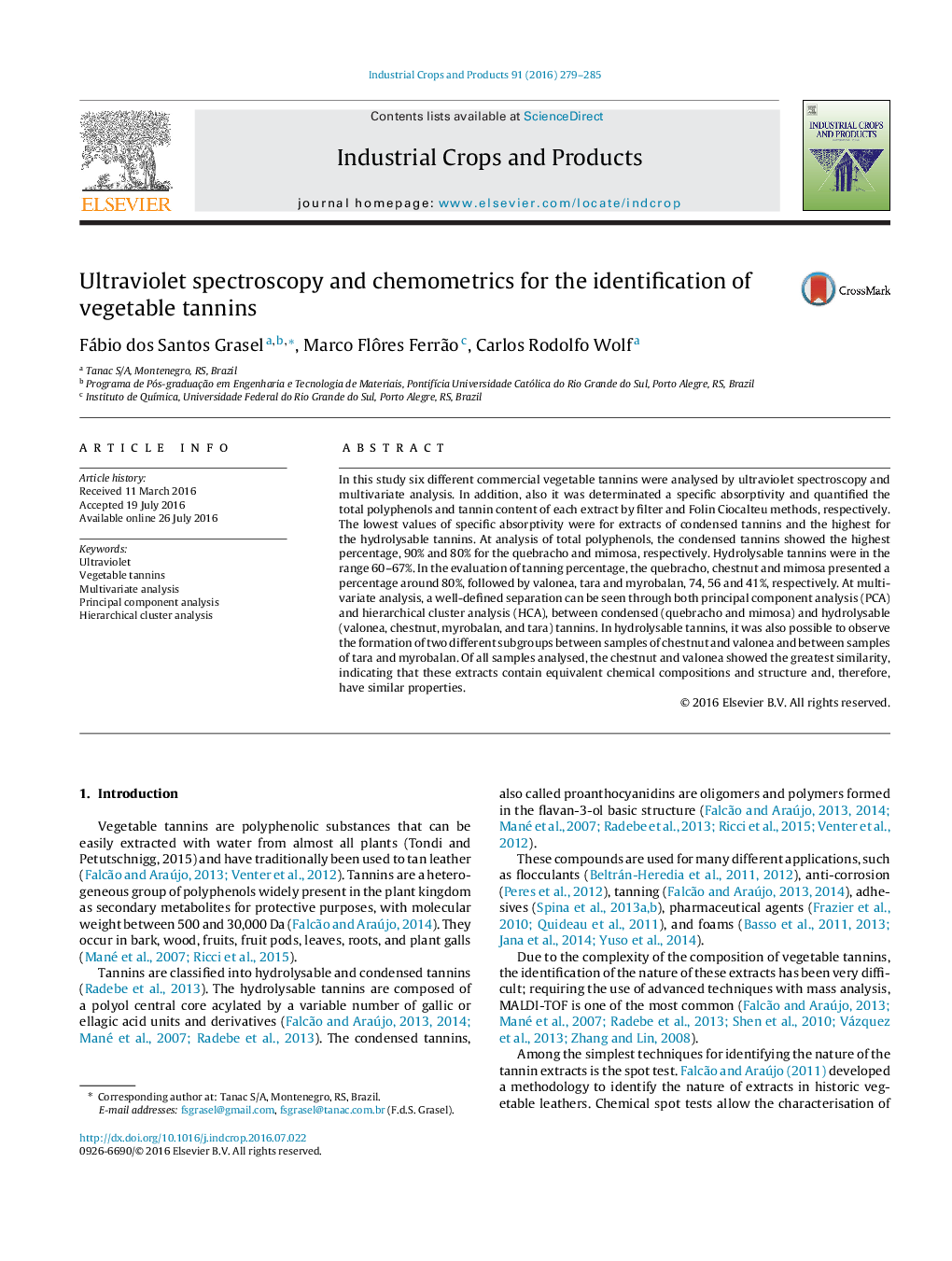| Article ID | Journal | Published Year | Pages | File Type |
|---|---|---|---|---|
| 4511978 | Industrial Crops and Products | 2016 | 7 Pages |
A new methodology was developed by UV for identification of commercial tannins.Six types of natural polyphenolic extracts were characterised by UV spectroscopy.The vegetable tannins absorb at 200⿿282 nm, in the ultraviolet region.The PCA presented a well-defined separation between extract vegetable tannins.The HCA presented a defined separation between condensed and hydrolysable tannins.
In this study six different commercial vegetable tannins were analysed by ultraviolet spectroscopy and multivariate analysis. In addition, also it was determinated a specific absorptivity and quantified the total polyphenols and tannin content of each extract by filter and Folin Ciocalteu methods, respectively. The lowest values of specific absorptivity were for extracts of condensed tannins and the highest for the hydrolysable tannins. At analysis of total polyphenols, the condensed tannins showed the highest percentage, 90% and 80% for the quebracho and mimosa, respectively. Hydrolysable tannins were in the range 60⿿67%. In the evaluation of tanning percentage, the quebracho, chestnut and mimosa presented a percentage around 80%, followed by valonea, tara and myrobalan, 74, 56 and 41%, respectively. At multivariate analysis, a well-defined separation can be seen through both principal component analysis (PCA) and hierarchical cluster analysis (HCA), between condensed (quebracho and mimosa) and hydrolysable (valonea, chestnut, myrobalan, and tara) tannins. In hydrolysable tannins, it was also possible to observe the formation of two different subgroups between samples of chestnut and valonea and between samples of tara and myrobalan. Of all samples analysed, the chestnut and valonea showed the greatest similarity, indicating that these extracts contain equivalent chemical compositions and structure and, therefore, have similar properties.
Graphical abstractFigure optionsDownload full-size imageDownload as PowerPoint slide
